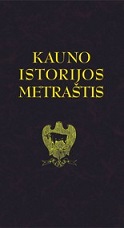Kauno tapatybė Henry’o Parlando ir jo kultūrinės aplinkos žmonių požiūriu
Kaunas Identity from Henry Parland ’s and Swedish Perspective
Author(s): Saulius PivorasSubject(s): History
Published by: Vytauto Didžiojo Universitetas
Keywords: Kauno miesto istorija; miesto tapatybė; kasdienybės istorija; daugiakultūriškumas; Švedijos ir Lietuvos diplomatiniai santykiai; history of Kaunas; the city’s identity; commonness history; multiculturalism; Swedish-Lithuanian diplomatic relations
Summary/Abstract: Henry Parland, a Finland-Swedish poet and writer, is one of the most notable representatives of modernism. In 1929, due to alcohol abuse, parents sent Henry to his uncle (mother’s brother) Vasily Sezemann in Kaunas. The article aims to present how the traditions, cultural, public and everyday life of Kaunas were seen by Henry Parland. Moreover, the impressions and reflections of the young Finnish poet, writer and officer at the Swedish embassy in Kaunas are compared with the impressions of the Swedish journalists and diplomats who visited Kaunas at the end of the second and the beginning of the third decade. Henry Parland’s impressions reveal the details and contrasts of Kaunas everyday life, arising from the rapid development of a small and poor province of the Russian Empire into the provisional capital of Lithuania. An especially notable and significant feature of Kaunas at the end of the second and the beginning of the third decade was its multicultural nature. The specificity and uniqueness of the city was determined by the combination of Lithuanian, Russian and Jewish cultures. Henry Parland explicitly characterized the multicultural profile of Kaunas, which is also reflected in the impressions of Swedish diplomats of those times. The development of the former province of the Russian Empire into the centre of Lithuania is also symbolized by the slow, but irreversible transformation of the orthography of “Kovno” into “Kaunas” in Swedish official written communication in 1936.
Journal: Kauno istorijos metraštis
- Issue Year: 2013
- Issue No: 13
- Page Range: 175-187
- Page Count: 13
- Language: Lithuanian

